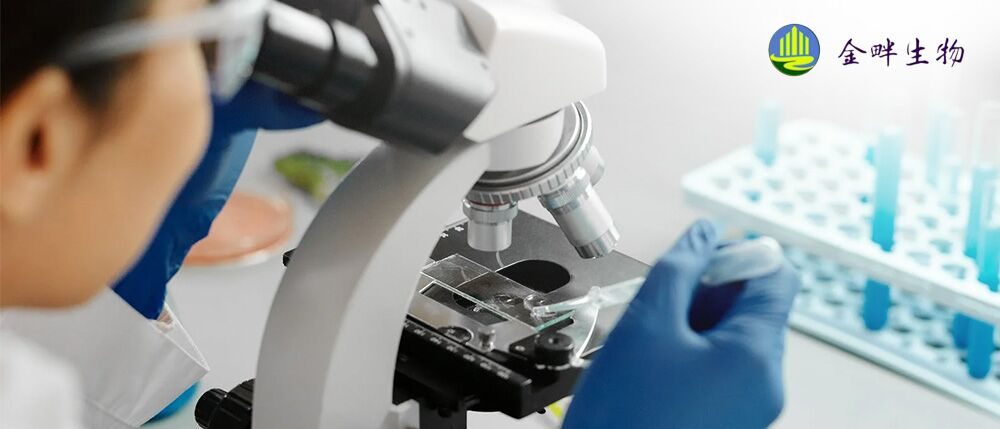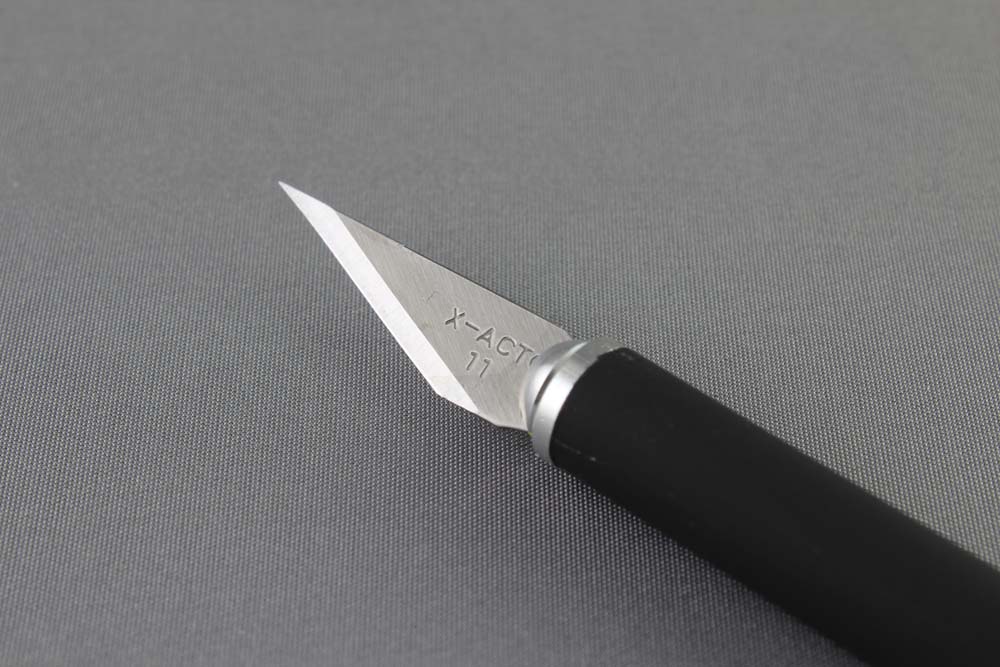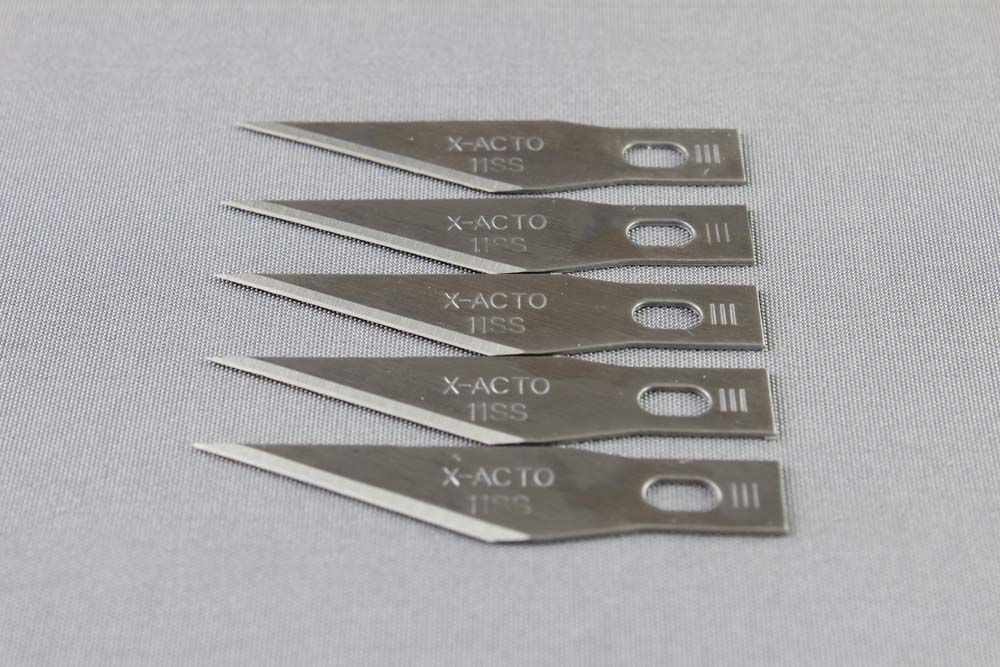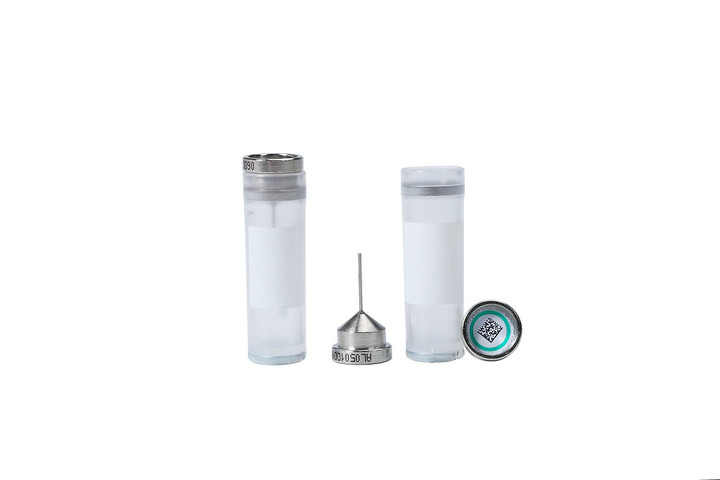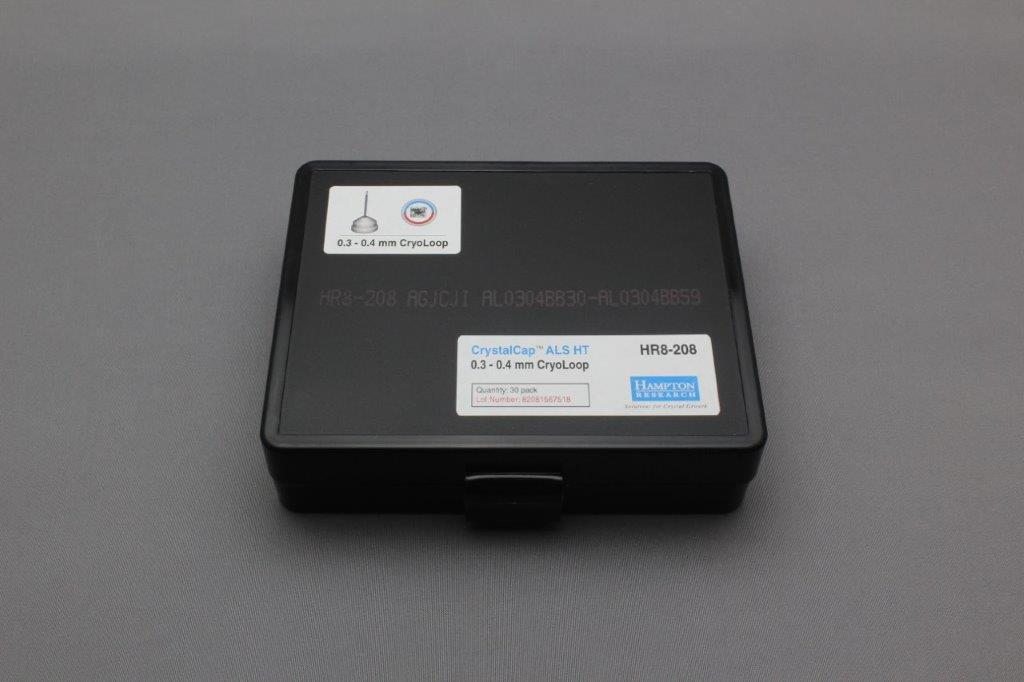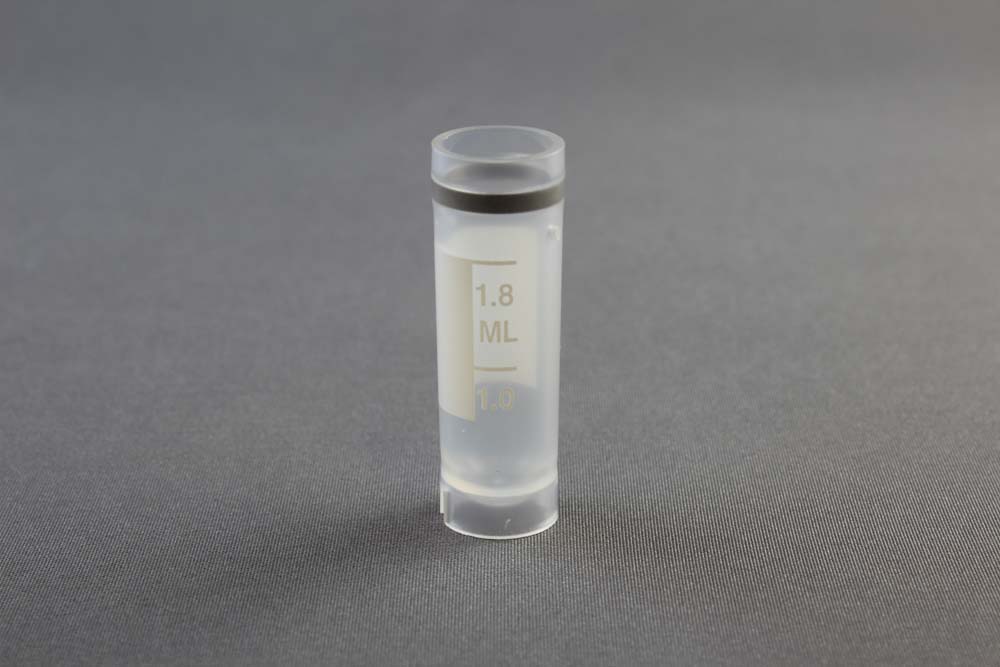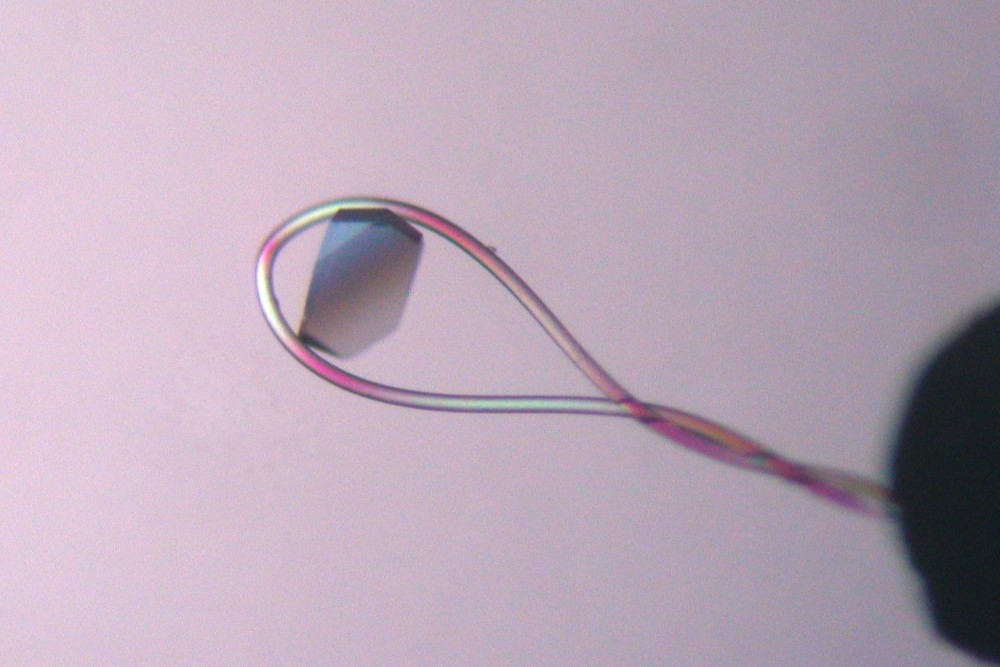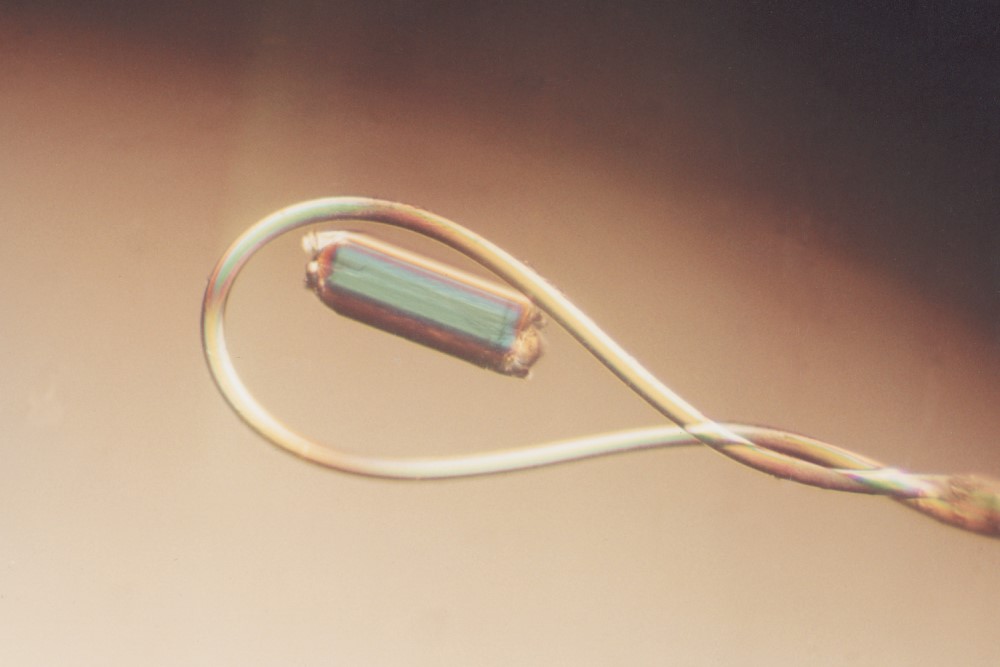CAT NO
HR2-907-01
NAME
SaltRx 1 #01 / SaltRx HT A1 185ml
DESCRIPTION
1.8 M Sodium acetate trihydrate pH 7.0, 0.1 M BIS-TRIS propane pH 7.0
CAT NO
HR2-907-02
NAME
SaltRx 1 #02 / SaltRx HT A2 185ml
DESCRIPTION
2.8 M Sodium acetate trihydrate pH 7.0, 0.1 M BIS-TRIS propane pH 7.0
CAT NO
HR2-907-03
NAME
SaltRx 1 #03 / SaltRx HT A3 185ml
DESCRIPTION
1.5 M Ammonium chloride, 0.1 M Sodium acetate trihydrate pH 4.6
CAT NO
HR2-907-04
NAME
SaltRx 1 #04 / SaltRx HT A4 185ml
DESCRIPTION
1.5 M Ammonium chloride, 0.1 M BIS-TRIS propane pH 7.0
CAT NO
HR2-907-05
NAME
SaltRx 1 #05 / SaltRx HT A5 185ml
DESCRIPTION
1.5 M Ammonium chloride, 0.1 M Tris pH 8.5
CAT NO
HR2-907-06
NAME
SaltRx 1 #06 / SaltRx HT A6 185ml
DESCRIPTION
3.5 M Ammonium chloride, 0.1 M Sodium acetate trihydrate pH 4.6
CAT NO
HR2-907-07
NAME
SaltRx 1 #07 / SaltRx HT A7 185ml
DESCRIPTION
3.5 M Ammonium chloride, 0.1 M BIS-TRIS propane pH 7.0
CAT NO
HR2-907-08
NAME
SaltRx 1 #08 / SaltRx HT A8 185ml
DESCRIPTION
3.5 M Ammonium chloride, 0.1 M Tris pH 8.5
CAT NO
HR2-907-09
NAME
SaltRx 1 #09 / SaltRx HT A9 185ml
DESCRIPTION
2.2 M Sodium chloride, 0.1 M Sodium acetate trihydrate pH 4.6
CAT NO
HR2-907-10
NAME
SaltRx 1 #10 / SaltRx HT A10 185ml
DESCRIPTION
2.2 M Sodium chloride, 0.1 M BIS-TRIS propane pH 7.0
CAT NO
HR2-907-11
NAME
SaltRx 1 #11 / SaltRx HT A11 185ml
DESCRIPTION
2.2 M Sodium chloride, 0.1 M Tris pH 8.5
CAT NO
HR2-907-12
NAME
SaltRx 1 #12 / SaltRx HT A12 185ml
DESCRIPTION
3.2 M Sodium chloride, 0.1 M Sodium acetate trihydrate pH 4.6
CAT NO
HR2-907-13
NAME
SaltRx 1 #13 / SaltRx HT B1 185ml
DESCRIPTION
3.2 M Sodium chloride, 0.1 M BIS-TRIS propane pH 7.0
CAT NO
HR2-907-14
NAME
SaltRx 1 #14 / SaltRx HT B2 185ml
DESCRIPTION
3.2 M Sodium chloride, 0.1 M Tris pH 8.5
CAT NO
HR2-907-15
NAME
SaltRx 1 #15 / SaltRx HT B3 185ml
DESCRIPTION
1.0 M Ammonium citrate dibasic, 0.1 M Sodium acetate trihydrate pH 4.6
CAT NO
HR2-907-16
NAME
SaltRx 1 #16 / SaltRx HT B4 185ml
DESCRIPTION
1.8 M Ammonium citrate dibasic, 0.1 M Sodium acetate trihydrate pH 4.6
CAT NO
HR2-907-17
NAME
SaltRx 1 #17 / SaltRx HT B5 185ml
DESCRIPTION
1.0 M Ammonium citrate tribasic pH 7.0, 0.1 M BIS-TRIS propane pH 7.0
CAT NO
HR2-907-18
NAME
SaltRx 1 #18 / SaltRx HT B6 185ml
DESCRIPTION
2.0 M Ammonium citrate tribasic pH 7.0, 0.1 M BIS-TRIS propane pH 7.0
CAT NO
HR2-907-19
NAME
SaltRx 1 #19 / SaltRx HT B7 185ml
DESCRIPTION
0.7 M Sodium citrate tribasic dihydrate, 0.1 M BIS-TRIS propane pH 7.0
CAT NO
HR2-907-20
NAME
SaltRx 1 #20 / SaltRx HT B8 185ml
DESCRIPTION
0.7 M Sodium citrate tribasic dihydrate, 0.1 M Tris pH 8.5
CAT NO
HR2-907-21
NAME
SaltRx 1 #21 / SaltRx HT B9 185ml
DESCRIPTION
1.2 M Sodium citrate tribasic dihydrate, 0.1 M BIS-TRIS propane pH 7.0
CAT NO
HR2-907-22
NAME
SaltRx 1 #22 / SaltRx HT B10 185ml
DESCRIPTION
1.2 M Sodium citrate tribasic dihydrate, 0.1 M Tris pH 8.5
CAT NO
HR2-907-23
NAME
SaltRx 1 #23 / SaltRx HT B11 185ml
DESCRIPTION
0.4 M Magnesium formate dihydrate, 0.1 M Sodium acetate trihydrate pH 4.6
CAT NO
HR2-907-24
NAME
SaltRx 1 #24 / SaltRx HT B12 185ml
DESCRIPTION
0.4 M Magnesium formate dihydrate, 0.1 M BIS-TRIS propane pH 7.0
CAT NO
HR2-907-25
NAME
SaltRx 1 #25 / SaltRx HT C1 185ml
DESCRIPTION
0.4 M Magnesium formate dihydrate, 0.1 M Tris pH 8.5
CAT NO
HR2-907-26
NAME
SaltRx 1 #26 / SaltRx HT C2 185ml
DESCRIPTION
0.7 M Magnesium formate dihydrate, 0.1 M BIS-TRIS propane pH 7.0
CAT NO
HR2-907-27
NAME
SaltRx 1 #27 / SaltRx HT C3 185ml
DESCRIPTION
2.0 M Sodium formate, 0.1 M Sodium acetate trihydrate pH 4.6
CAT NO
HR2-907-28
NAME
SaltRx 1 #28 / SaltRx HT C4 185ml
DESCRIPTION
2.0 M Sodium formate, 0.1 M BIS-TRIS propane pH 7.0
CAT NO
HR2-907-29
NAME
SaltRx 1 #29 / SaltRx HT C5 185ml
DESCRIPTION
2.0 M Sodium formate, 0.1 M Tris pH 8.5
CAT NO
HR2-907-30
NAME
SaltRx 1 #30 / SaltRx HT C6 185ml
DESCRIPTION
3.5 M Sodium formate, 0.1 M Sodium acetate trihydrate pH 4.6
CAT NO
HR2-907-31
NAME
SaltRx 1 #31 / SaltRx HT C7 185ml
DESCRIPTION
3.5 M Sodium formate, 0.1 M BIS-TRIS propane pH 7.0
CAT NO
HR2-907-32
NAME
SaltRx 1 #32 / SaltRx HT C8 185ml
DESCRIPTION
3.5 M Sodium formate, 0.1 M Tris pH 8.5
CAT NO
HR2-907-33
NAME
SaltRx 1 #33 / SaltRx HT C9 185ml
DESCRIPTION
1.2 M DL-Malic acid pH 7.0, 0.1 M BIS-TRIS propane pH 7.0
CAT NO
HR2-907-34
NAME
SaltRx 1 #34 / SaltRx HT C10 185ml
DESCRIPTION
2.2 M DL-Malic acid pH 7.0, 0.1 M BIS-TRIS propane pH 7.0
CAT NO
HR2-907-35
NAME
SaltRx 1 #35 / SaltRx HT C11 185ml
DESCRIPTION
1.4 M Sodium malonate pH 7.0, 0.1 M BIS-TRIS propane pH 7.0
CAT NO
HR2-907-36
NAME
SaltRx 1 #36 / SaltRx HT C12 185ml
DESCRIPTION
2.4 M Sodium malonate pH 7.0, 0.1 M BIS-TRIS propane pH 7.0
CAT NO
HR2-907-37
NAME
SaltRx 1 #37 / SaltRx HT D1 185ml
DESCRIPTION
2.5 M Ammonium nitrate, 0.1 M Sodium acetate trihydrate pH 4.6
CAT NO
HR2-907-38
NAME
SaltRx 1 #38 / SaltRx HT D2 185ml
DESCRIPTION
2.5 M Ammonium nitrate, 0.1 M BIS-TRIS propane pH 7.0
CAT NO
HR2-907-39
NAME
SaltRx 1 #39 / SaltRx HT D3 185ml
DESCRIPTION
2.5 M Ammonium nitrate, 0.1 M Tris pH 8.5
CAT NO
HR2-907-40
NAME
SaltRx 1 #40 / SaltRx HT D4 185ml
DESCRIPTION
6.0 M Ammonium nitrate, 0.1 M Sodium acetate trihydrate pH 4.6
CAT NO
HR2-907-41
NAME
SaltRx 1 #41 / SaltRx HT D5 185ml
DESCRIPTION
6.0 M Ammonium nitrate, 0.1 M BIS-TRIS propane pH 7.0
CAT NO
HR2-907-42
NAME
SaltRx 1 #42 / SaltRx HT D6 185ml
DESCRIPTION
6.0 M Ammonium nitrate, 0.1 M Tris pH 8.5
CAT NO
HR2-907-43
NAME
SaltRx 1 #43 / SaltRx HT D7 185ml
DESCRIPTION
1.5 M Sodium nitrate, 0.1 M Sodium acetate trihydrate pH 4.6
CAT NO
HR2-907-44
NAME
SaltRx 1 #44 / SaltRx HT D8 185ml
DESCRIPTION
1.5 M Sodium nitrate, 0.1 M BIS-TRIS propane pH 7.0
CAT NO
HR2-907-45
NAME
SaltRx 1 #45 / SaltRx HT D9 185ml
DESCRIPTION
1.5 M Sodium nitrate, 0.1 M Tris pH 8.5
CAT NO
HR2-907-46
NAME
SaltRx 1 #46 / SaltRx HT D10 185ml
DESCRIPTION
4.0 M Sodium nitrate, 0.1 M Sodium acetate trihydrate pH 4.6
CAT NO
HR2-907-47
NAME
SaltRx 1 #47 / SaltRx HT D11 185ml
DESCRIPTION
4.0 M Sodium nitrate, 0.1 M BIS-TRIS propane pH 7.0
CAT NO
HR2-907-48
NAME
SaltRx 1 #48 / SaltRx HT D12 185ml
DESCRIPTION
4.0 M Sodium nitrate, 0.1 M Tris pH 8.5
CAT NO
HR2-909-01
NAME
SaltRx 2 #01 / SaltRx HT E1 185ml
DESCRIPTION
1.0 M Ammonium phosphate monobasic, 0.1 M Sodium acetate trihydrate pH 4.6
CAT NO
HR2-909-02
NAME
SaltRx 2 #02 / SaltRx HT E2 185ml
DESCRIPTION
1.8 M Ammonium phosphate monobasic, 0.1 M Sodium acetate trihydrate pH 4.6
CAT NO
HR2-909-03
NAME
SaltRx 2 #03 / SaltRx HT E3 185ml
DESCRIPTION
1.5 M Ammonium phosphate dibasic, 0.1 M Tris pH 8.5
CAT NO
HR2-909-04
NAME
SaltRx 2 #04 / SaltRx HT E4 185ml
DESCRIPTION
2.4 M Ammonium phosphate dibasic, 0.1 M Tris pH 8.5
CAT NO
HR2-909-05
NAME
SaltRx 2 #05 / SaltRx HT E5 185ml
DESCRIPTION
1.0 M Sodium phosphate monobasic monohydrate, Potassium phosphate dibasic / pH 5.0 (0.98 M Sodium phosphate monobasic monohydrate, 0.02 M Potassium phosphate dibasic)
CAT NO
HR2-909-06
NAME
SaltRx 2 #06 / SaltRx HT E6 185ml
DESCRIPTION
1.0 M Sodium phosphate monobasic monohydrate, Potassium phosphate dibasic / pH 6.9 (0.35 M Sodium phosphate monobasic monohydrate, 0.65 M Potassium phosphate dibasic)
CAT NO
HR2-909-07
NAME
SaltRx 2 #07 / SaltRx HT E7 185ml
DESCRIPTION
1.0 M Sodium phosphate monobasic monohydrate, Potassium phosphate dibasic / pH 8.2 (0.04 M Sodium phosphate monobasic monohydrate, 0.96 M Potassium phosphate dibasic)
CAT NO
HR2-909-08
NAME
SaltRx 2 #08 / SaltRx HT E8 185ml
DESCRIPTION
1.8 M Sodium phosphate monobasic monohydrate, Potassium phosphate dibasic / pH 5.0 (1.764 M Sodium phosphate monobasic monohydrate, 0.036 M Potassium phosphate dibasic)
CAT NO
HR2-909-09
NAME
SaltRx 2 #09 / SaltRx HT E9 185ml
DESCRIPTION
1.8 M Sodium phosphate monobasic monohydrate, Potassium phosphate dibasic / pH 6.9 (0.63 M Sodium phosphate monobasic monohydrate, 1.17 M Potassium phosphate dibasic)
CAT NO
HR2-909-10
NAME
SaltRx 2 #10 / SaltRx HT E10 185ml
DESCRIPTION
1.8 M Sodium phosphate monobasic monohydrate, Potassium phosphate dibasic / pH 8.2 (0.072 M Sodium phosphate monobasic monohydrate, 1.728 M Potassium phosphate dibasic)
CAT NO
HR2-909-11
NAME
SaltRx 2 #11 / SaltRx HT E11 185ml
DESCRIPTION
0.5 M Succinic acid pH 7.0, 0.1 M BIS-TRIS propane pH 7.0
CAT NO
HR2-909-12
NAME
SaltRx 2 #12 / SaltRx HT E12 185ml
DESCRIPTION
1.0 M Succinic acid pH 7.0, 0.1 M BIS-TRIS propane pH 7.0
CAT NO
HR2-909-13
NAME
SaltRx 2 #13 / SaltRx HT F1 185ml
DESCRIPTION
1.5 M Ammonium sulfate, 0.1 M Sodium acetate trihydrate pH 4.6
CAT NO
HR2-909-14
NAME
SaltRx 2 #14 / SaltRx HT F2 185ml
DESCRIPTION
1.5 M Ammonium sulfate, 0.1 M BIS-TRIS propane pH 7.0
CAT NO
HR2-909-15
NAME
SaltRx 2 #15 / SaltRx HT F3 185ml
DESCRIPTION
1.5 M Ammonium sulfate, 0.1 M Tris pH 8.5
CAT NO
HR2-909-16
NAME
SaltRx 2 #16 / SaltRx HT F4 185ml
DESCRIPTION
2.5 M Ammonium sulfate, 0.1 M Sodium acetate trihydrate pH 4.6
CAT NO
HR2-909-17
NAME
SaltRx 2 #17 / SaltRx HT F5 185ml
DESCRIPTION
2.5 M Ammonium sulfate, 0.1 M BIS-TRIS propane pH 7.0
CAT NO
HR2-909-18
NAME
SaltRx 2 #18 / SaltRx HT F6 185ml
DESCRIPTION
2.5 M Ammonium sulfate, 0.1 M Tris pH 8.5
CAT NO
HR2-909-19
NAME
SaltRx 2 #19 / SaltRx HT F7 185ml
DESCRIPTION
0.8 M Lithium sulfate monohydrate, 0.1 M Sodium acetate trihydrate pH 4.6
CAT NO
HR2-909-20
NAME
SaltRx 2 #20 / SaltRx HT F8 185ml
DESCRIPTION
0.8 M Lithium sulfate monohydrate, 0.1 M BIS-TRIS propane pH 7.0
CAT NO
HR2-909-21
NAME
SaltRx 2 #21 / SaltRx HT F9 185ml
DESCRIPTION
0.8 M Lithium sulfate monohydrate, 0.1 M Tris pH 8.5
CAT NO
HR2-909-22
NAME
SaltRx 2 #22 / SaltRx HT F10 185ml
DESCRIPTION
1.5 M Lithium sulfate monohydrate, 0.1 M Sodium acetate trihydrate pH 4.6
CAT NO
HR2-909-23
NAME
SaltRx 2 #23 / SaltRx HT F11 185ml
DESCRIPTION
1.5 M Lithium sulfate monohydrate, 0.1 M BIS-TRIS propane pH 7.0
CAT NO
HR2-909-24
NAME
SaltRx 2 #24 / SaltRx HT F12 185ml
DESCRIPTION
1.5 M Lithium sulfate monohydrate, 0.1 M Tris pH 8.5
CAT NO
HR2-909-25
NAME
SaltRx 2 #25 / SaltRx HT G1 185ml
DESCRIPTION
1.0 M Magnesium sulfate hydrate, 0.1 M Sodium acetate trihydrate pH 4.6
CAT NO
HR2-909-26
NAME
SaltRx 2 #26 / SaltRx HT G2 185ml
DESCRIPTION
1.0 M Magnesium sulfate hydrate, 0.1 M BIS-TRIS propane pH 7.0
CAT NO
HR2-909-27
NAME
SaltRx 2 #27 / SaltRx HT G3 185ml
DESCRIPTION
1.0 M Magnesium sulfate hydrate, 0.1 M Tris pH 8.5
CAT NO
HR2-909-28
NAME
SaltRx 2 #28 / SaltRx HT G4 185ml
DESCRIPTION
1.8 M Magnesium sulfate hydrate, 0.1 M Sodium acetate trihydrate pH 4.6
CAT NO
HR2-909-29
NAME
SaltRx 2 #29 / SaltRx HT G5 185ml
DESCRIPTION
1.8 M Magnesium sulfate hydrate, 0.1 M BIS-TRIS propane pH 7.0
CAT NO
HR2-909-30
NAME
SaltRx 2 #30 / SaltRx HT G6 185ml
DESCRIPTION
1.8 M Magnesium sulfate hydrate, 0.1 M Tris pH 8.5
CAT NO
HR2-909-31
NAME
SaltRx 2 #31 / SaltRx HT G7 185ml
DESCRIPTION
0.7 M Ammonium tartrate dibasic, 0.1 M Sodium acetate trihydrate pH 4.6
CAT NO
HR2-909-32
NAME
SaltRx 2 #32 / SaltRx HT G8 185ml
DESCRIPTION
0.7 M Ammonium tartrate dibasic, 0.1 M BIS-TRIS propane pH 7.0
CAT NO
HR2-909-33
NAME
SaltRx 2 #33 / SaltRx HT G9 185ml
DESCRIPTION
0.7 M Ammonium tartrate dibasic, 0.1 M Tris pH 8.5
CAT NO
HR2-909-34
NAME
SaltRx 2 #34 / SaltRx HT G10 185ml
DESCRIPTION
1.0 M Ammonium tartrate dibasic, 0.1 M Sodium acetate trihydrate pH 4.6
CAT NO
HR2-909-35
NAME
SaltRx 2 #35 / SaltRx HT G11 185ml
DESCRIPTION
1.3 M Ammonium tartrate dibasic, 0.1 M BIS-TRIS propane pH 7.0
CAT NO
HR2-909-36
NAME
SaltRx 2 #36 / SaltRx HT G12 185ml
DESCRIPTION
1.4 M Ammonium tartrate dibasic, 0.1 M Tris pH 8.5
CAT NO
HR2-909-37
NAME
SaltRx 2 #37 / SaltRx HT H1 185ml
DESCRIPTION
0.6 M Potassium sodium tartrate tetrahydrate, 0.1 M BIS-TRIS propane pH 7.0
CAT NO
HR2-909-38
NAME
SaltRx 2 #38 / SaltRx HT H2 185ml
DESCRIPTION
1.2 M Potassium sodium tartrate tetrahydrate, 0.1 M BIS-TRIS propane pH 7.0
CAT NO
HR2-909-39
NAME
SaltRx 2 #39 / SaltRx HT H3 185ml
DESCRIPTION
0.6 M Potassium sodium tartrate tetrahydrate, 0.1 M Tris pH 8.5
CAT NO
HR2-909-40
NAME
SaltRx 2 #40 / SaltRx HT H4 185ml
DESCRIPTION
1.2 M Potassium sodium tartrate tetrahydrate, 0.1 M Tris pH 8.5
CAT NO
HR2-909-41
NAME
SaltRx 2 #41 / SaltRx HT H5 185ml
DESCRIPTION
0.5 M Potassium thiocyanate, 0.1 M Sodium acetate trihydrate pH 4.6
CAT NO
HR2-909-42
NAME
SaltRx 2 #42 / SaltRx HT H6 185ml
DESCRIPTION
0.5 M Potassium thiocyanate, 0.1 M BIS-TRIS propane pH 7.0
CAT NO
HR2-909-43
NAME
SaltRx 2 #43 / SaltRx HT H7 185ml
DESCRIPTION
0.5 M Potassium thiocyanate, 0.1 M Tris pH 8.5
CAT NO
HR2-909-44
NAME
SaltRx 2 #44 / SaltRx HT H8 185ml
DESCRIPTION
4.0 M Ammonium acetate, 0.1 M Sodium acetate trihydrate pH 4.6
CAT NO
HR2-909-45
NAME
SaltRx 2 #45 / SaltRx HT H9 185ml
DESCRIPTION
4.0 M Ammonium acetate, 0.1 M BIS-TRIS propane pH 7.0
CAT NO
HR2-909-46
NAME
SaltRx 2 #46 / SaltRx HT H10 185ml
DESCRIPTION
4.0 M Ammonium acetate, 0.1 M Tris pH 8.5
CAT NO
HR2-909-47
NAME
SaltRx 2 #47 / SaltRx HT H11 185ml
DESCRIPTION
35% v/v Tacsimate pH 7.0, 0.1 M BIS-TRIS propane pH 7.0
CAT NO
HR2-909-48
NAME
SaltRx 2 #48 / SaltRx HT H12 185ml
DESCRIPTION
60% v/v Tacsimate pH 7.0, 0.1 M BIS-TRIS propane pH 7.0
